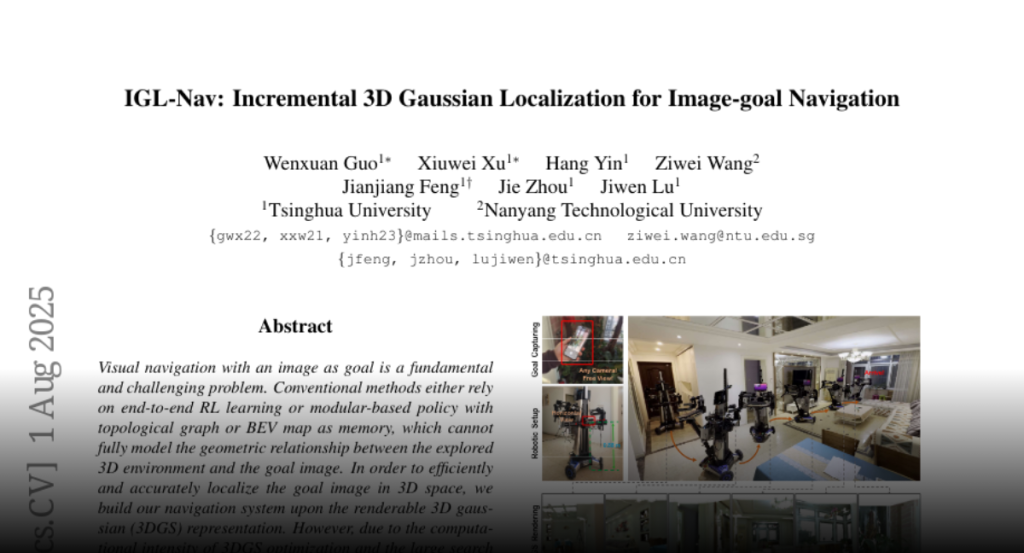IGL-Nav uses an incremental 3D Gaussian representation for efficient and accurate image-goal navigation in 3D space, outperforming existing methods and applicable in real-world settings.
Visual navigation with an image as goal is a fundamental and challenging
problem. Conventional methods either rely on end-to-end RL learning or
modular-based policy with topological graph or BEV map as memory, which cannot
fully model the geometric relationship between the explored 3D environment and
the goal image. In order to efficiently and accurately localize the goal image
in 3D space, we build our navigation system upon the renderable 3D gaussian
(3DGS) representation. However, due to the computational intensity of 3DGS
optimization and the large search space of 6-DoF camera pose, directly
leveraging 3DGS for image localization during agent exploration process is
prohibitively inefficient. To this end, we propose IGL-Nav, an Incremental 3D
Gaussian Localization framework for efficient and 3D-aware image-goal
navigation. Specifically, we incrementally update the scene representation as
new images arrive with feed-forward monocular prediction. Then we coarsely
localize the goal by leveraging the geometric information for discrete space
matching, which can be equivalent to efficient 3D convolution. When the agent
is close to the goal, we finally solve the fine target pose with optimization
via differentiable rendering. The proposed IGL-Nav outperforms existing
state-of-the-art methods by a large margin across diverse experimental
configurations. It can also handle the more challenging free-view image-goal
setting and be deployed on real-world robotic platform using a cellphone to
capture goal image at arbitrary pose. Project page:
https://gwxuan.github.io/IGL-Nav/.

